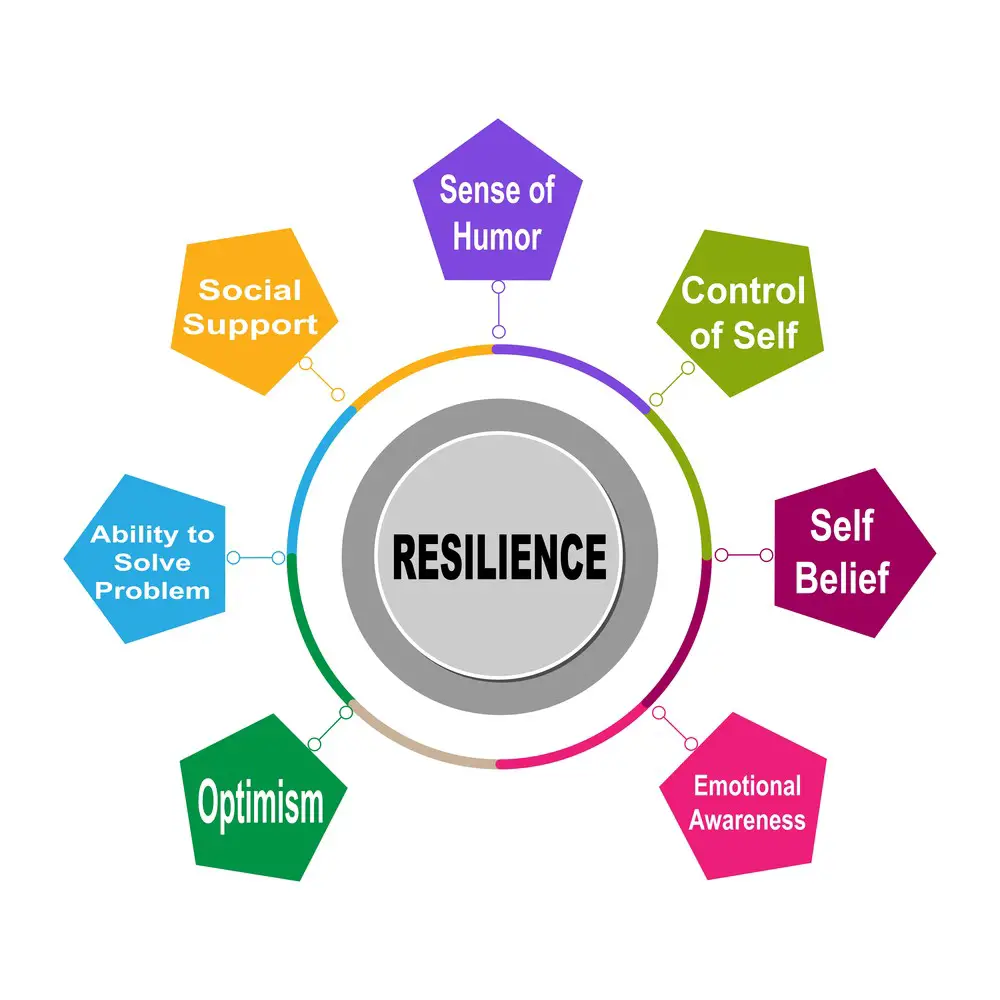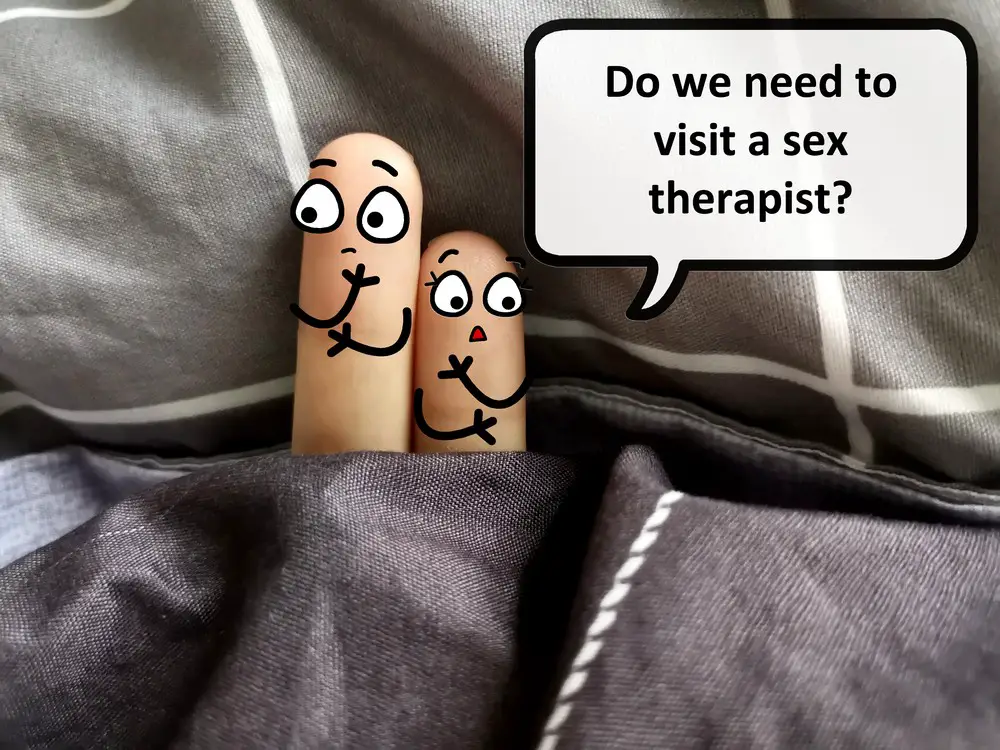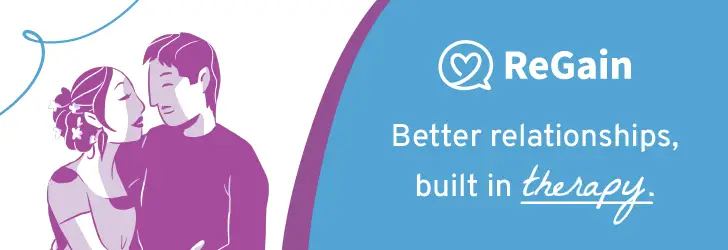As a BetterHelp affiliate, we receive compensation from BetterHelp if you purchase products or services through the links provided
Perv therapy uniquely addresses sexual issues and tensions in individuals and couples. It involves engaging in unconventional practices and role-playing scenarios to help individuals work through their emotions and desires in a safe and therapeutic space. Perv therapy aims to foster a deeper understanding of one’s sexuality and provide an outlet for exploring one’s fantasies and needs.
In today’s society, there is an increasing openness to sex-positive approaches to healing and self-growth. Perv therapy is one such option that offers to help individuals and couples overcome a wide range of issues, from jealousy and infidelity to communication problems and sexual dissatisfaction. By incorporating roleplay and imaginative prompts, perv therapy encourages individuals to confront their insecurities, develop a greater sense of trust, and ultimately strengthen their relationships.
The perv therapy landscape is full of unique and thought-provoking practices, with both popular figures and a strong online presence giving voice to this new approach. As the movement continues to grow, it is important to consider its merits and potential drawbacks while always focusing on the therapeutic goals and well-being of the participants.
Key Takeaways
- Perv therapy is an unconventional approach to addressing sexual issues and tensions.
- It emphasizes roleplay, imagination, and trust-building as key components for healing and growth.
- The perv therapy movement has gained popularity and is becoming accepted in certain circles.
 Understanding Perv Therapy
Understanding Perv Therapy
Perv therapy, often used as a slang term to describe therapy sessions related to sexual behavior, is typically a form of sex or sexual addiction therapy. As you explore this type of therapy, it is essential to differentiate between legitimate therapeutic practices and inappropriate or even exploitative content.
Sex therapists and counselors provide ethical treatment and support for individuals and couples navigating various sexual issues. Some legitimate forms of treatment in the field include:
- Sex therapy: This involves working with a psychologist or therapist who specializes in addressing sexual challenges and concerns.
- Sexual addiction therapy: These therapists work with individuals who struggle with compulsive or problematic sexual behaviors. Sexual addiction therapists in Lincoln, Nebraska, are available for those seeking help to address and control these behaviors.
As you consider working with a therapist for perv therapy, remember:
- Look for licensed professionals: Ensure that your chosen therapist holds a valid license in their field, such as a psychologist, counselor, or social worker.
- Prioritize therapists with specialized training: Select professionals with specific training and experience in addressing sexual issues, as this will provide the most effective guidance and support.
- Seek a comfortable environment: It’s crucial to feel at ease discussing intimate topics during therapy sessions, so work with a therapist who helps you feel comfortable sharing your experiences and concerns.
Participating in ethical, professionally guided therapy can help address and resolve sexual issues, leading to healthier relationships and improved self-esteem. Keep these points in mind as you seek a qualified therapist for perv therapy. Remember, only work with reputable professionals to ensure your well-being and to achieve the most productive therapeutic results.
 Role in Today’s Society
Role in Today’s Society
Influence on Teens
In today’s society, the Internet has become easily accessible to everyone, including teenagers. This access has exposed them to various sources of content, including porn. The prevalence of porn can affect the way that young people perceive and understand sexual relationships. As a result, educating teens about the potential implications of consuming explicit material becomes crucial, and how these materials may influence their real-life experiences and expectations.
One way to promote a healthy understanding of sex and relationships is through perv therapy. This therapy addresses sexual frustrations and misunderstandings arising from exposure to explicit content or misconceptions about sex. By providing guidance and support, perv therapy can potentially help teenagers:
- Develop a more realistic perception of sexual relationships
- Recognize and dismiss unrealistic expectations brought on by exposure to porn
- Improve communication skills when discussing sexual experiences and desires with partners
 Pornography and Perv Therapy
Pornography and Perv Therapy
While porn may entertain many adults, it can sometimes convey unrealistic expectations and distorted representations of sexual relationships. These misconceptions can affect people’s abilities to form healthy connections in their real lives. This is where perv therapy can play a role:
- Helping individuals recognize the difference between fantasy and reality in pornography
- Encouraging healthy exploration of one’s sexuality within the boundaries of consent and respect
- Addressing feelings of guilt or shame associated with watching explicit content
In a friendly and supportive environment, perv therapy fosters open discussions about difficulties that may arise from exposure to porn. Additionally, integrated strategies like behavioral therapy and counseling can help individuals develop healthy sexual practices and foster better communication with partners in their relationships.
Although porn is widely present in today’s society, with awareness and understanding, individuals can learn to distinguish between fantasy and reality while developing and maintaining healthier relationships. Perv therapy can provide the necessary guidance to help navigate these complex topics and develop a more grounded approach to sexual relationships.
Popular Figures in Perv Therapy
In the world of perv therapy, several skilled therapists stand out in their ability to help patients overcome sexual issues and foster healthy, fulfilling relationships. Each of them brings unique techniques and approaches to the table. Let’s look at some of the most prominent figures in this field.
Richelle Ryan and Shay Sights are two experienced therapists who have made a name for themselves by addressing the sexual tension between patients and helping them release pent-up frustrations. Their innovative methods allow couples to communicate openly and improve their intimate relationships.
On the other hand, Ryan Keely and Nina Nieves are experts in guiding individuals through moving past masturbation and exploring new ways of connecting emotionally and physically with partners. Clients can achieve greater satisfaction and depth in their romantic relationships with their assistance.
Julia Robbie is a renowned family therapist who takes an unconventional approach to restoring dysfunctional families. Her successful work with couples like Ken and Barbie and their stepdaughter Maria has allowed these families to thrive and find balance in their lives again.
Hazel Moore, Athena Anderson, and Kiki Daire are also well-regarded in the field, with their expertise ranging from dealing with jealousy, to rediscovering passion and lust, to understanding the unique dynamics between stepfamily members. Clients seeking help benefit from comprehensive, empathetic, and tailored approaches to their situations.
Another noteworthy pair is Adrianna Jade and Sia Wood, who specialize in addressing the challenges individuals and couples face navigating modern dating and relationships. They offer practical advice to help clients foster stronger connections and maintain healthy boundaries with one another.
Lastly, rising stars such as Maria Kazi, Kenzie Love, and Kyler Quinn are gaining recognition for their innovative and empathetic methods in supporting clients through various stages of their relationships. Working with these therapists, individuals and couples can find the tools and guidance needed to build healthier, happier relationships.
As you explore the world of perv therapy, keep these popular figures in mind. They have significantly impacted many’s lives and continue pushing the boundaries of conventional therapy methods to deliver lasting results for their clients.
 The Bonding Aspect of Perv Therapy
The Bonding Aspect of Perv Therapy
Bonding through Sex Therapy
In some cases, perv therapy can involve utilizing sex therapy techniques to aid family members in overcoming relationship challenges and strengthening their emotional bond. Working with a professional therapist with experience and expertise in guiding families through such therapeutic interventions is important in these situations. When used properly, sex therapy can be a helpful tool for opening up communication and fostering deeper connections between loved ones. Remember, the primary goal is to bring family members closer emotionally while maintaining a respectful and healthy dynamic.
Stepsister Dynamics
In the context of perv therapy, stepsister dynamics are often worth exploring. Differing backgrounds, parenting styles, and pre-existing familial connections can sometimes complicate these relationships. By addressing any underlying conflicts or misunderstandings, stepsisters can learn to appreciate and support each other as family members. A skilled therapist can help guide these relationships toward healthier, more supportive interactions.
Some tips for improving stepsister relationships include:
- Open and honest communication: Encourage the expression of feelings in a respectful and non-confrontational manner.
- Establishing boundaries: Acknowledge and respect each other’s personal space, values, and beliefs.
- Finding common ground: Discover shared interests, hobbies, or values that can bring stepsisters closer together.
- Encouraging empathy: Encourage each other to put yourself in the other person’s shoes to understand their feelings and perspectives better.
Remember, the goal of perv therapy in the context of stepsister relationships should be to guide the sisters toward healthier emotional dynamics, foster respect, and create a supportive environment where both individuals can thrive.
 Therapeutic Roleplay and Imagination Manifestation
Therapeutic Roleplay and Imagination Manifestation
Roleplaying in therapy can be an incredibly potent tool for various forms of mental health treatment. Therapeutic roleplay allows you to experiment with different perspectives, explore your emotions, and practice effective communication. It allows you to confront and resolve conflicts while promoting empathy and understanding.
On the other hand, imagination manifests as activating and utilizing your inner creativity and innovation. By tapping into your imagination during therapy sessions, you can open yourself up to discovering alternative solutions and strategies for overcoming personal challenges.
Incorporating both roleplay and imagination manifestation in therapy promotes growth and healing in several ways:
- Boosting empathy: Through roleplay, you can experience various viewpoints and better understand the emotions and motivations of others. This newfound empathy can help you navigate conflict resolution and improve your relationships.
- Exploring emotions: As you engage in these activities, you can connect with various emotions, identifying their origins and learning to cope more constructively.
- Practicing communication: Roleplay allows you to fine-tune your interpersonal skills and experiment with different communication styles, increasing your confidence in dealing with real-life situations.
- Creative problem solving: When you tap into your imagination, you open up possibilities for addressing challenges more innovatively and effectively.
Here are some strategies to enhance the effectiveness of therapeutic roleplay and imagination manifestation:
- Set clear objectives: Identify specific goals for each session, such as exploring an emotion or practicing a particular communication skill.
- Create a safe space: Establish a comfortable environment where you can freely express your thoughts, emotions, and ideas without judgment.
- Stay focused and present: Engage fully in the activity, allowing yourself to experience and process the feelings and emotions.
- Reflect on your experiences: After each session, consider what you learned and how to incorporate those insights into your daily life.
By embracing therapeutic roleplay and imagination manifestation in your therapy sessions, you can cultivate a deeper understanding of yourself and others, improve your communication skills, and, ultimately, enhance your overall well-being.
 Dealing with Sexual Tension
Dealing with Sexual Tension
Sexual tension is a common experience for many people and can manifest in various ways. Learning how to manage and work through it is essential to maintain healthy, fulfilling relationships and personal well-being is essential. Here are a few strategies to help you deal with sexual tension in different situations:
- Self-awareness: Understand what triggers your sexual desires and tensions. When feeling aroused, be mindful of your physical, emotional, and mental states. Self-awareness is the first step towards managing sexual tension effectively.
- Open communication: Talk about sexual tension with your partner or a trusted friend. Expressing your feelings and finding reassurance that you’re not alone in experiencing these emotions is crucial. Honest and open dialogue can help dissipate sexual tension and pave the way for a deeper connection with your partner.
- Healthy boundaries: Set boundaries to protect your emotional, physical, and mental well-being. Establish clear limits with others about what is and isn’t acceptable behavior and ensure that you communicate these boundaries effectively. Respecting your and others’ boundaries will help prevent situations that might exacerbate sexual tension.
- Find alternative outlets: Engaging in non-sexual activities or hobbies can help divert your mind from the tension and provide a healthier focus. Physical activities like jogging, swimming, or yoga release built-up energy and provide an emotional outlet. Creative pursuits such as painting, writing, or gardening can also help ease your mind and relieve sexual tension.
- Masturbation: Often considered taboo, masturbation is a natural and healthy way to relieve sexual tension and explore your pleasure. It can also better understand your body and help you learn what makes you feel good, benefiting your sexual experiences with others.
- Focus on emotional intimacy: Developing deeper connections with your partner or friends can help alleviate sexual tension. Spend quality time together and share your thoughts, feelings, and experiences to foster emotional intimacy, often creating a stronger foundation for physical intimacy.
Remember, it’s crucial to maintain open communication and respect personal boundaries when dealing with sexual tension. By applying these strategies, you can effectively manage and navigate through sexual tension that arises in your life.

Stepdad Figure in Perv Therapy
In Perv Therapy, the stepdad figure is crucial in addressing sensitive issues that may arise in a family setting. This unique relationship dynamic can offer support and guidance but can also be prone to misunderstandings and tension. As a stepdad, you may encounter situations where you’ll need to address complex concerns and navigate delicate situations.
In some cases, the stepdad becomes the more approachable adult in the family, acting as a confidant and trustworthy figure for stepchildren. Your role as a stepdad may involve providing emotional support and helping with crucial decision-making processes.
Here are some key aspects to know about the stepdad figure in Perv Therapy:
- Establish trust: Building a strong foundation of trust is essential for any stepdad in Perv Therapy. This often means being a reliable, understanding, and supportive figure who can contribute positively to the family dynamic.
- Set boundaries: As a stepdad, it’s important to establish clear boundaries with your stepchildren. This will help create a healthy and respectful relationship, reducing the risk of tension and strife.
- Communication is key: Regular open conversations can go a long way in fostering healthy relationships between the stepdad and stepchildren. You can better understand individual needs and work together to overcome challenges by actively listening and engaging.
- Seek professional support when needed: In some situations, you might need assistance to work through complex issues. A therapist can provide guidance and resources to help navigate such challenges, ensuring all parties feel empowered and supported.
Remember that being a stepdad isn’t always easy, especially when trust and communication issues arise. However, approaching your role with care, understanding, and empathy can positively impact your stepchildren’s lives and contribute to a harmonious family environment.
Regression Therapy in Perv Therapy
Regression therapy can be integral to perv therapy, focusing on resolving significant past events interfering with your present mental and emotional well-being. This technique delves into past experiences and works to heal how they influence your present-day behavior, especially if you’re trying to overcome issues like childhood trauma.
Through regression therapy, you can uncover the root causes of various emotional and psychological issues that may hold you back. Some common ailments treated with regression therapy include depression, anxiety, phobias, PTSD, and insomnia. The success rate for regression therapy is estimated to be between 60% to 70%, providing a range from mild improvement to complete healing of symptoms.
In perv therapy, a therapist may use regression techniques such as hypnosis to induce a trance-like state, making you more open to suggestions. This process aims to help you gradually remember and address traumatic experiences, which can ultimately lead to a more empowered and healthy present. To get the most out of regression therapy in perv therapy, consider the following:
- Develop trust with your therapist: Building a strong foundation of trust with your therapist ensures that you feel safe and supported while exploring difficult experiences.
- Be open-minded: Approach regression therapy with an open mind and be willing to explore various techniques to find what works best for your unique situation.
- Reflect on your progress: Periodically evaluate the effectiveness of your therapy sessions and discuss any adjustments that may be necessary with your therapist.
Regression therapy can be a powerful tool in perv therapy when working through traumatic experiences and overcoming emotional and psychological barriers. Combining this approach with other therapeutic methods can achieve a more fulfilled and balanced life.
The Advertising Scene
In the world of perv therapy, advertising plays a significant role in capturing attention and driving interest in the content being offered. Let’s discuss the advertising scene under the sub-section “Interests and Reach”.
Interests and Reach
When it comes to advertising perv therapy, it’s important to understand the interests of your target audience. In this case, individuals seeking a more unconventional approach to addressing their frustrations may be drawn to the ads. Be honest and transparent about the content, ensuring that your ads align with the interests and desires of your target audience.
To reach a broad audience, consider using multiple advertising channels, such as social media platforms, banner ads, and sponsored content. Here are a few tips for creating attention-grabbing advertisements and increasing the reach of your perv therapy content:
- Visual appeal: Utilize eye-catching images, bold colors, and enticing visuals to draw attention to your ads. Don’t forget that a picture is worth a thousand words!
- Concise messaging: Keep your ad copy short, emphasizing your perv therapy content’s benefits or unique aspects.
- Call-to-action (CTA): Encourage the viewer to take action by including a clear CTA, such as “Learn More” or “Access Content Now.”
- Targeted audience: Use demographic and interest-based targeting to ensure your ads reach the right people.
Remember, advertising perv therapy content requires a delicate balance between promoting the content’s unconventional nature and appealing to your target audience’s interests. By keeping these tips in mind and experimenting with different ad formats and channels, you’ll be on your way to creating a successful advertising campaign for your perv therapy content. And always remember to stay friendly and approachable, allowing your viewers to feel more connected and engaged with your offerings.
 Stars of Perv Therapy
Stars of Perv Therapy
Penelope Kay, Penny Barber, and Braylin Bailey are top performers in the adult entertainment world known for their work in Perv Therapy. They’ve impressed viewers with their on-screen presence and acting abilities, catering to various fantasies and desires.
Penelope Kay is a talented actress who stands out for her youthful charm and captivating energy. She has appeared in numerous Perv Therapy scenes, delivering engaging performances that satisfy audiences.
Penny Barber, another Perv Therapy star, brings a more experienced perspective to her roles, often involving step-family dynamics, couples cheating, or revenge scenarios. Her sultry allure and mature demeanor imbue her performances with an irresistible sense of eroticism.
Braylin Bailey is a fresh face in the industry, showcasing her versatility and passion for the craft in her Perv Therapy appearances. Braylin has quickly become a fan favorite for her ability to convey emotional depth and intimate connection with her scene partners.
Perv Therapy also connects with BFFs, a popular adult site featuring group sex scenes with young women. It’s not uncommon to see performers who have appeared in Perv Therapy productions also starring in BFFs productions, as both sites are committed to high-quality, captivating content.
In addition to their work in Perv Therapy, many of these performers have explored the medical fantasy genre with PervDoctor. This site expands on the various treatment scenarios established by Perv Therapy and broadens the scope to include doctor-patient interactions.
In conclusion, the stars of Perv Therapy exhibit diverse talents and backgrounds, delivering unforgettable performances that satisfy their viewers’ desires. Whether through step-family dynamics, couples cheating, revenge, or more, these performers are dedicated to adult entertainment and continue to impact the industry significantly.
Stepsister’s Jealousy
Have you ever dealt with a jealous stepsister? If so, you know how challenging it can be to navigate this complex emotion within a blended family. Jealousy, especially regarding stepsiblings, can create tension and conflicts that disrupt the harmony of your household. However, there are ways to address this issue and restore balance and understanding.
First, it’s essential to recognize the signs of jealousy in a stepsister. She may become overly possessive of her stepbrother or display acts of aggression when he interacts with other girls. This behavior can manifest in various ways, such as constantly monitoring his activities, making snide comments, or trying to control his relationships.
Sometimes, jealousy stems from a sense of insecurity or a feeling of inadequacy. In such cases, showing empathy and understanding for your stepsister’s feelings is essential. Open communication can help address her concerns and make her feel valued. For example, try engaging in activities that promote bonding and bring the family closer together. This may include:
- Organizing family game nights
- Attending each other’s extracurricular events
- Collaborating on household chores and projects
Building a strong foundation of trust and support can alleviate much of the tension from jealousy.
In some situations, seeking professional assistance, such as therapy, might be beneficial to address the underlying issues causing your stepsister’s jealousy. A therapist can provide guidance, resources, and coping strategies to help her manage her emotions, improve communication, and foster a healthier relationship with her stepbrother.
It’s important to remember that dealing with a jealous stepsister can be a delicate process. Patience and understanding are key in maintaining a healthy family dynamic. By addressing jealousy early and constructively, you can create a harmonious environment where everyone’s emotional needs are met and valued.
 Move beyond pain and confusion together.
Move beyond pain and confusion together.
The Kink in the Armor: Perv Therapy’s Unique Selling Points
Not your grandma’s relationship advice, perv therapy takes a walk on the wild side to mend sexual tensions and relationship woes. If you’re curious about what makes this unique approach tick, here are some of its major selling points:
- Roleplay Wonderland: Sometimes, playing pretend helps us discover our real selves. Don costumes, adopt personas and explore scenarios you’ve only dreamed of—while a trained therapist guides you through emotional pitfalls.
- Imagination Unleashed: Traditional therapy can be a bit, well, vanilla. Perv therapy adds a dash of chocolate swirl, offering imaginative prompts to get you out of your comfort zone and into a place of deeper emotional understanding.
- Trust, But with Handcuffs: When you push boundaries, you better ensure you do it with someone you trust. Perv therapy works to build that crucial trust between partners.
The Velvet Rope: Is Perv Therapy Right for You?
Before you dive in, take a moment to weigh the pros and cons. Knowing whether it aligns with your goals and comfort level is crucial. Here are some considerations:
- Stigma and Social Perceptions: Let’s be real; people have opinions. If you’re uncomfortable with the potential societal judgment, that’s something to consider.
- Therapist Credentials: A perv therapist should still be a certified, trained professional. Check their qualifications rigorously.
- Emotional Readiness: Are you and your partner (if you have one) emotionally prepared for the ride? High and low highs—Ensure you’re ready for the emotional roller coaster.
The Rulebook: Tips for Diving into Perv Therapy Safely
It’s not all fun and handcuffs; you should know how to practice safe “perving.” Here are some tips to keep the experience as therapeutic as it is titillating:
- Set Boundaries: Know your “safe word” and have an open dialogue about what’s off-limits.
- Check in Regularly: Emotional check-ins are as important as physical ones. Make sure everyone involved is comfortable and feeling respected.
- Know When to Pause or Stop: Sometimes, it’s too much. And that’s okay. Recognize when it’s time to take a step back and regroup.
Winking Lights: Signs Perv Therapy May Be For You
Have you ever wondered if perv therapy might be your tea or something more exotic? Here’s how you can tell:
- Frustrated Desires: You’re always circling back to certain fantasies but never find a way to explore them safely.
- Trust Issues: You feel there are unexplored dimensions of trust in your relationship that could be fortified through a guided experience.
- Communication Gaps: Conversations about your sexual desires and needs often lead to tension or misunderstandings.
- Curiosity: The mention of roleplay or imaginative scenarios in therapy piques your interest.
Destination Unknown: Goals and Tracking Progress
Knowing your destination helps you pick the right vehicle. In perv therapy, setting clear goals is paramount. Here are some progress markers:
- Enhanced Communication: You find it easier to discuss your needs, desires, and boundaries.
- Deepened Trust: Being vulnerable with your partner or within yourself feels safer.
- Fulfilling Encounters: The line between your fantasies and reality blurs in a good way, improving your overall satisfaction.
Yellow Flags: Warning Signs To Watch For
All that glitters is not gold; sometimes, the shiniest therapies can cloud your judgment. Keep your eyes peeled for:
- Unqualified Therapists: Anyone can hang a shingle saying they offer perv therapy, but credentials and experience matter.
- Lack of Consent: Whether between you and your therapist or you and your partner, every step should be consensual.
- Emotional or Physical Harm: If you or your partner feel harmed rather than healed, it’s time to reassess.
Red Lights: Signs Perv Therapy Isn’t for You
While intriguing, perv therapy isn’t everyone’s jam. These signs suggest it might not be the right fit:
- Discomfort with Sexual Exploration: If exploring your sexuality in a detailed way makes you uneasy, this therapy is likely not for you.
- Struggle with Vulnerability: If you’re not prepared to be emotionally open and vulnerable, alone or with a partner, the experience might do more harm than good.
- Conservative Views on Sexuality: While there’s nothing wrong with holding traditional views, they might clash with the more unconventional aspects of perv therapy.
Remember, therapy is a tool, not a magic wand. It should align with your comfort levels, life values, and long-term objectives for emotional and sexual well-being. So before you buckle up for this unique therapeutic ride, make sure it’s taking you where you want to go.
The Looking Glass: Ethical Considerations and Final Thoughts
While we’re slowly shaking off the shackles of sexual stigma, there’s still work to be done. As perv therapy grows in acceptance and practice, ethical considerations about consent, boundaries, and mental well-being become increasingly important. Like all therapies, it’s not a one-size-fits-all, but it could be a game-changer for those willing to leap.
Frequently Asked Questions
What is the purpose of perv therapy?
Perv therapy aims to address and help individuals overcome problematic or unhealthy sexual habits, often involving family members. The therapy aims to foster healthier, more appropriate behaviors and relationships by focusing on these habits.
How can perv therapy help with personal issues?
Perv therapy can be beneficial in addressing personal issues by providing a safe and professional environment for clients to discuss their concerns. By openly discussing their habits and desires, individuals can gain insight into the underlying causes and work with their therapist to develop strategies to change these behaviors and improve their overall emotional well-being.
What techniques are used in perv therapy?
Depending on the specific issue and individual’s needs, various therapeutic techniques can be employed in perv therapy. Some common approaches include cognitive behavioral therapy (CBT), psychodynamic therapy, and family systems therapy. The therapist and client work together to determine the most effective action.
How long does a typical perv therapy session last?
The length of a perv therapy session can vary depending on the individual’s needs and the specific therapy being used. However, sessions typically run for approximately 50 minutes to an hour. The number of sessions required can also differ, with some individuals benefiting from just a few sessions while others may require ongoing support.
How to find a qualified perv therapist?
To find a qualified perv therapist, it’s essential to do your research. Start by asking for referrals from your primary care physician, mental health professionals, or personal contacts who may have experience with reputable therapists. Additionally, you can look for certified professionals through online directories or professional organizations. Always ensure that the therapist is licensed and has experience in treating the specific issues you’re facing.
Are there any risks involved in perv therapy?
As with any form of therapy, there is always a potential for risks or negative side effects. Individuals may experience emotional distress or discomfort when discussing their habits and desires in perv therapy. Establishing a strong therapeutic relationship with your therapist and communicating concerns is crucial to providing appropriate support and care. Therapy can be a powerful tool for growth and healing when approached with commitment and an open mind.
? My Personal Recommendation for BetterHelp and Regain.us
? Finding a Lifeline: BetterHelp and Regain.us, Betterhelp’s site for couples, have been invaluable resources for me, especially during a period of immense personal struggle. I have experienced both highs and lows – surviving 9/11 and losing touch with my children. BetterHelp has now become my go-to space for healing and self-discovery.
?⚕️ Professional Support: The mental health professionals on these platforms are skilled and empathetic. Their approach has made it easier for me to manage my emotional turmoil.
? Why I Recommend: If you’re going through a tough time, personal, relational, or mental, I wholeheartedly recommend you try BetterHelp and Regain.us. They’ve been game-changers for me and might be for you too.

? The Cornerstone of Resilience: My Life’s Backbone
? The Unseen Armor: Resilience isn’t just a buzzword; it’s the invisible armor that has allowed me to wade through life’s most treacherous waters. From surviving 9-11 to grappling with the emotional turmoil of family separation, my resilience has been my silent ally.
?️ Weathering Storms: Resilience isn’t about avoiding difficulties; it’s about learning how to sail in a storm. It’s how I’ve managed to keep afloat emotionally and mentally, even when life felt like a sinking ship.
? The Cycle of Healing: Resilience has taught me that healing isn’t linear. There will be setbacks, heartaches, and failures. But each time I get knocked down, I use my resilience to get back up, dust myself off, and face the next challenge head-on.
? Mental Health’s Best Friend: Resilience and mental health are symbiotic. By building up my resilience, I’ve fortified my mental health, making it easier to manage my emotions, confront my fears, and live a more balanced life.
? Learning and Teaching: I not only practice resilience in my life but also advocate for it in my writings. I aim to impart the invaluable lesson that mental health issues, no matter how overwhelming, can be tackled when one is equipped with resilience.
? Final Thoughts: Resilience isn’t just a value; it’s a lifestyle, a mindset, and perhaps the most underrated tool for mental health management. It’s my secret weapon, one that I gladly share with the world in hopes of inspiring others to discover their own inner strength. Remember, resilience isn’t the absence of hardship; it’s the ability to thrive despite it.
? Jacob Maslow: Walking Through Fire to Guide Others
? From Tragic Beginnings: I’m not just a 9-11 survivor, but a fighter who’s navigated life’s labyrinthine challenges, from the horror of losing over a thousand co-workers to the gut-wrenching alienation from my children due to my ex-wife’s narcissistic behavior.
??? Shattered Family Ties: Once close-knit, my relationship with my children has eroded due to my ex’s intensifying narcissism and her blatant disregard for court-ordered custody agreements. The struggle has been both a legal and emotional roller coaster.
? The Healing Walks: Every day, I find peace and clarity on long, meditative walks. It’s my therapy, my moment of zen amid the chaos.
✍️ The Pen is Mightier: I’ve channeled my struggles into a source of empowerment for others. Writing about the challenges of mental health and dealing with narcissistic partners has not only been therapeutic for me but also a lifeline for those in similar situations.
? Legal Support: In addition, I’ve found a legal resource aimed at supporting those whose spouses play fast and loose with court orders, particularly when children are involved.
? The Path Ahead: Mental health isn’t a solo journey. Together, we can break down barriers, fight stigma, and reclaim our lives. I’m living proof that no challenge is too daunting to overcome.

- Breaking the Silence: Why Men’s Mental Health Matters More Than Ever - April 15, 2025
- How to Transform a Home’s Patio Space into a Relaxing Space - March 23, 2025
- 5 Strategies to Use a Cell Phone to Help Manage Your Stress - March 23, 2025
This site contains affiliate links to products. We will receive a commission for purchases made through these links.


 Understanding Perv Therapy
Understanding Perv Therapy Role in Today’s Society
Role in Today’s Society Pornography and Perv Therapy
Pornography and Perv Therapy The Bonding Aspect of Perv Therapy
The Bonding Aspect of Perv Therapy Therapeutic Roleplay and Imagination Manifestation
Therapeutic Roleplay and Imagination Manifestation Dealing with Sexual Tension
Dealing with Sexual Tension
 Stars of Perv Therapy
Stars of Perv Therapy
